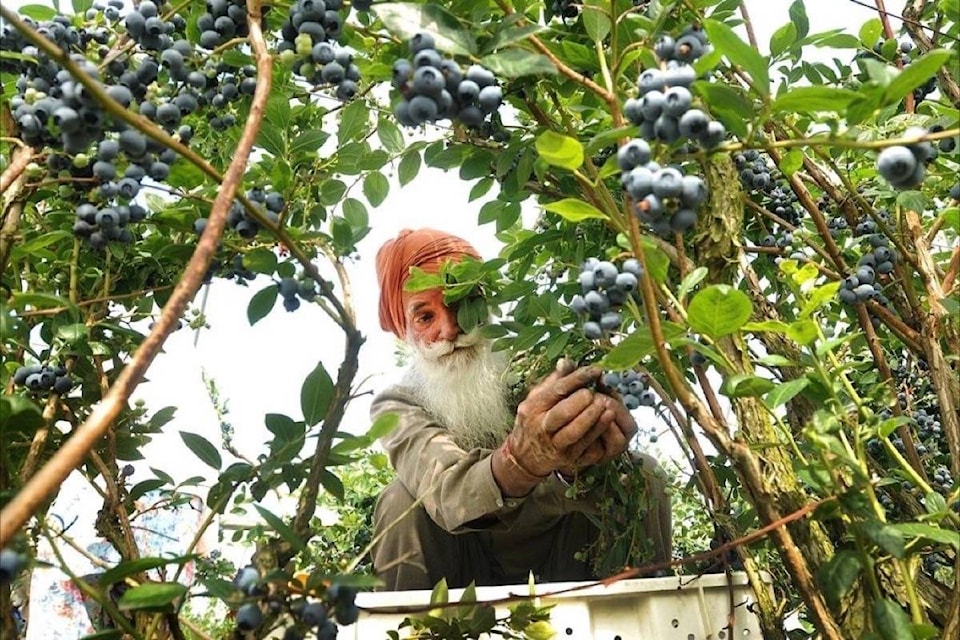As B.C.’s minimum wages rises to the highest of any province, $15.20 an hour effective June 1, the labour ministry is continuing to study the piece-rate pay for harvesting crops that was last increased two years ago.
The ministry commissioned a study, released in January 2019 as the piece rate was increased by 11.5 per cent for 15 crops grown in B.C. The survey by agriculture consultant Karen Taylor estimated that the increase added $7.7 million annually to the cost for harvesting, as all growers reported a shortage of labour that held back their expansion and explored ways to increase mechanical harvesting and employment of temporary foreign workers.
Labour Minister Harry Bains said Monday growers now pay by the hour for up to five of the 15 crops subject to the piece rate, and more information is needed to go further.
“We will be moving very cautiously because it is an area where we want to make sure that our agriculture industry continues to grow, with all the different challenges that they are facing, and at the same time the workers in the agriculture industry are also paid fair wages,” Bains said May 31.
Piece work is regulated in B.C. and mainly used by fruit growers in the Thompson-Okanagan and berry and vegetable growers in the Lower Mainland and Fraser Valley. Like previous studies, the 2019 report found some workers made less than the minimum hourly wage, with blueberry farms paying the lowest rates, and grapes and cherries paying the highest.
RELATED: Abbotsford grower looks to build worker apartments
RELATED: Ottawa funds COVID-19 quarantine for farm workers
RELATED: Aquilini berry farm ordered to pay more to workers
Taylor confirmed that the traditional pattern of B.C. hiring continues, with mostly older Indo-Canadian workers provided by labour brokers in the Fraser Valley and Lower Mainland, and younger migrant workers from Quebec the main source of summer labour in the Thompson-Okanagan. Temporary foreign workers from Mexico and Caribbean countries also harvest in B.C., with rates set by the federal government, and piece rate pay used as an incentive for productivity.
“Of 178 harvest workers in the Thompson-Okanagan region, 94 per cent reported that they prefer the piece rate, 53 per cent said they would make less money if they were paid the minimum hourly wage, and 87 per cent said they would stop being a harvest worker if they were only paid the minimum hourly wage,” Taylor’s report says.
Some farmers refuse to disclose pay information, for highly competitive markets such as mushrooms, and most face varying market prices they do not control.
“Additionally, working hours are often unrecorded, since payment is purely piece-based. In several cases, the data requested were either not available, not in a useful form, or were not disclosed,” the report states. “Due to gaps in the data and a low sample size for each of the sectors, the results of this study do not constitute a significant provincial representation of any crop.”
@tomfletcherbc
tfletcher@blackpress.ca
Like us on Facebook and follow us on Twitter.
